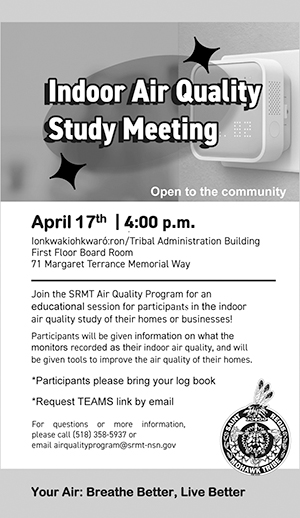The Treaty of Canandaigua, 1794
Continued from last week
The actions of New York State, which continued to obtain Haudenosaunee lands through fraud and trickery, combined with the treaties forced on the confederate nations by the United States federal government, were increasing the chances of continued war. By 1794, it appeared that the Senecas, still the largest nation of the Confederacy, were about to join the war in the Ohio country.
The United States Commissioner for Indian Affairs was Timothy Pickering (Connisauti), a man with a reputation for integrity on all sides. When Pickering believed that Secretary of War Knox was misrepresenting the purpose of a meeting in Philadelphia to which he had invited the Six Nations, Pickering wrote President Washington:
Indians have been so often deceived by white people that man is, among many of them, but another name for liar. Really Sir, I am unwilling to be subjected to this infamy. I confess I am not indifferent to a good name even among Indians.
(Cited in the Report of Dr. Jack Campisi in connection with the Oneida claim against New York, p. 63)
Pickering tried to repair the damage done at For Stanwix in much the same way that Sir William Johnson had prepared for treaties, meeting with individual nations first, and eventually feeling confident enough to call a general treaty for the fall of 1794 at Canandaigua.
‘Thayendenega (Joseph Brant) had been meeting with Pickering, seeking a general peace for the Indian Nations, while apparently at the same time urging the western nations to a spirited resistance. The Haudenosaunee, as part of the larger confederacy, had placed a “Moon of Wampum” in the Ohio country, making that territory “a house with four doors” that could be a home for all those who wished to visit there.
In 1791, that Confederacy inflicted a series of defeats on the United States, culminating in “St. Clair’s Defeat”, in which nearly seven hundred Americans were killed and half the United States Army was broken. The tide had turned over the next three years, as General “Mad Anthony” Wayne replaced St. Clair, and changed tactics, War in North America was not like ear in Europe: there were few permanent armies, few open battlefields, few soldiers willing to stand in open ranks and shoot at others standing in similar positions. The rifle, not the musket, was the infantry weapon. St. Clair’s defeat was the decisive lesson to the United States in the folly of “classical” military tactics. Wayne’s approach, though, violated the “rules of war” between aboriginal nations. He burned people’s crops (as Washington had done a decade before, earning the President of the United States the permanent name of “Destroyer of Villages”) He took women and old men hostage. The crucial “battle” of the Ohio wars, though, was not really a defeat for the Indians. The United States forces met and pursued a force of Indians near the British Fort Miami. The Indians retreated past the fort, within range of the cannons--- and the British did not open fire on the Americans. This confirmed what many of the leaders had been saying: that the British had been providing the Indians with weapons and ammunition but were not willing to join the war directly. It was the same complaint against the British that the Haudenosaunee had made over the previous century in fighting the French.
Thayendenega realized that the Haudenosaunee were more exposed than the western nations, and had both a greater interest in peace with the United States and a greater ability to secure it. Thayendenega had been meeting with Pickering in Philadelphia. On September 2, 1794, he wrote: I cannot possibly attend the Treaty at Canandaigua being obliged to meet the Sake Indians according to promise, should the President of the United States agree to the line proposed and a meeting held at Buffalo Creek to complete this desirable object, my most cordial sanction shall not be wanting, and my most strenuous exertions shall be used to complete the good work of peace provided the proposed line formerly marked out be the basis of the treaty, and the boundary line between the United States and the Indian Nations.
Continued next week





Reader Comments(0)